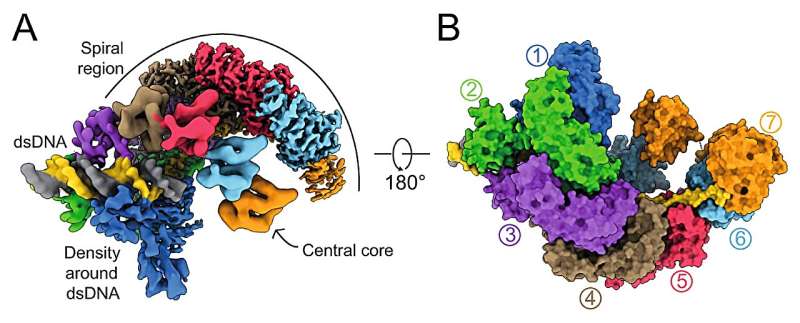This article has been reviewed according to Science X's editorial process and policies. Editors have highlighted the following attributes while ensuring the content's credibility:
fact-checked
peer-reviewed publication
trusted source
proofread
Researchers solve mystery behind DnaA protein's role in DNA replication initiation

In a breakthrough discovery, published in Nature Communications, scientists from Queen Mary University of London in collaboration with researchers at Newcastle University and The Francis Crick Institute have unraveled the intricate mechanism behind how DnaA, the master initiator of DNA replication in bacteria, specifically opens replication origins, the gateways to DNA duplication. This fundamental understanding sheds light on the crucial process that underpins the growth and reproduction of nearly all bacterial cells.
In this multidisciplinary work employing single-molecule TIRF microscopy, chemical biology and structural biology, Dr. Aravindan Ilangovan, Reader in Structural Biology, and his team at School of Biological and Behavioral Sciences of Queen Mary unveiled the molecular dance of DnaA at the replication origin using cryo-electron microscopy, in detail to near atomic resolution.
Their findings reveal a previously unknown dinucleotide binding pocket within the DnaA oligomer, where two bases of a repeating DnaA-trio sequence tightly bind, enabling the capture of a single DNA strand.
"This key single DNA strand capture is the critical step that allows DnaA to pry open the DNA duplex, paving the way for the initiation of DNA replication," explained Dr. Ilangovan. "Our work provides a molecular blueprint for how DnaA orchestrates this crucial step in bacterial replication, a fundamental process that underpins life itself."
This study's findings deepen our understanding of DNA replication and hold the potential for therapeutic applications. By targeting the specific interactions between DnaA and the replication origin, researchers could develop novel approaches towards tackling untreatable bacterial infections. Antibiotic resistance is on the rise and there is an ever-increasing need for novel antibiotics to tackle this current crisis.
"This groundbreaking discovery significantly advances our understanding of bacterial replication, a fundamental process crucial for life. The unique mechanism we have unraveled presents a compelling target for developing new antibiotics, potentially leading to novel treatments for multi-antibiotic resistant bacterial infections.
"We continue to delve deeper into the intricate dance of DNA replication, paving the way for further breakthroughs in understanding bacterial cell biology and combating antibiotic resistance," said Dr. Ilangovan.
More information: Simone Pelliciari et al, The bacterial replication origin BUS promotes nucleobase capture, Nature Communications (2023). DOI: 10.1038/s41467-023-43823-w
Journal information: Nature Communications
Provided by Queen Mary, University of London





















